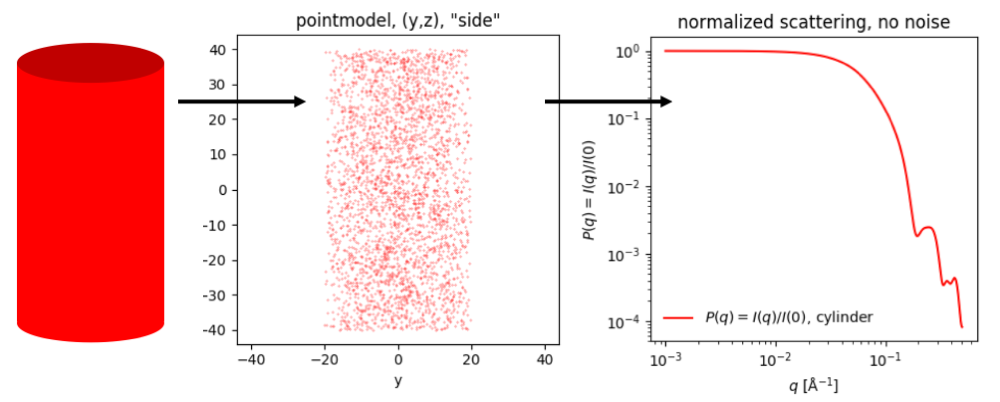Calculating small-angle scattering of an object using randomly distributed points
SAXS and SANS data from a particle, e.g. a cylinder, can be simulated using various methods. One of them, used by Shape2SAS, is to fill the cylinder volume by randomly distributed points (or small spheres). The scattering can then be calculated by the Debye equation.
If enough points are filled into the volume, the scattering from these points corresponds to the scattering from the cylinder. Much like pixels in an image, when the resolution is sufficiently high, you do not see the individual pixels.
The $q$-value define which size we probe: small $q$ probe large distances, and vice versa. So the larger $q$, you would like to simulate (the higher resolution you want), the more points you need to fill into the cylinder volume.
A cylinder is in fact a poor example, as the scattering from a cylinder can be calculated analytically, which is faster than than filling with points, but other shapes may not have an analytical expression. This could, e.g., be the envelope of a protein.

- Programs using beads or points to calculate saxs/sans data include:
- Shape2SAS (Larsen et al, 2023).
- CDEF (Deumer et al, 2022).
- SPONGE (Pauw and Breßler, 2021).
- DAMMIF/DAMMIN (Franke and Svergun, 2009).
- Legacy: programs that are no longer maintained
- McSim [no longer maintained, replaced by Shape2SAS] (Hansen, 1990, Hansen, 2014).